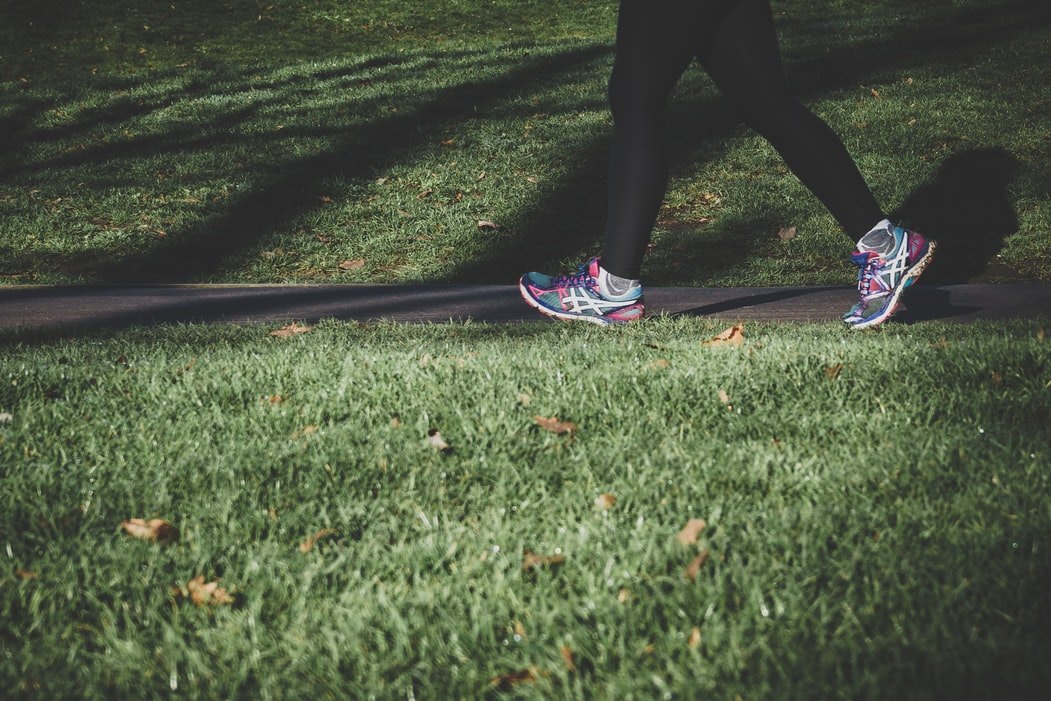It is said that “simplicity is a virtue.” Simplicity in daily life can often deliver a wide array of benefits and advantages. Walking is such a simple daily physical activity and is one of the most practiced and important physical activities in the world.
The movement of your feet one after the other will get your heart pumping efficiently, maintain body mass, enhance your mental strength, strengthen your lungs, and much more.
So, it is a one-stop solution to living a healthy, easy-going, and satisfying life, at least when it comes to taking care of your health. Let’s explore the importance of the world’s most practiced physical activity.

Man’s Best Medicine
The human ability to become bipedal evolved over millennia and is reason enough to use it to bring numerous benefits to your body. Walking is not only for getting from A to B, but when you stroll or practice brisk walking for health purposes, the benefits are far greater and efficient.

Walking is free and does not require investing in some trendy or innovative equipment, though you can make walking even more enjoyable by wearing comfortable clothes and shoes. Ideally, purchase shoes that are meant specially for walking or running. But even fancy shoes aren’t necessary. All you really have to do is make up your mind, grab your shoes, and just start walking, as simple as that.
Compared to normal walking, more rigorous or high-intensity walking has a wide array of benefits, including reducing the risk of cancer and the onslaught of diabetes.
Don’t worry; we will go into detail about these benefits shortly to help you understand why you need to walk every day, without fail, if you want to lead a healthy and happy life.
Current WHO Recommendations
As per the latest WHO regulations, an adult between the ages of 18 to 64 should devote 150 to 300 minutes towards a moderate-intensity aerobic activity per week. The requirement for vigorous-intensity physical activity is less, at 75 to 150 minutes on a weekly basis.
For someone with life and work responsibilities, devoting 2.5 hours a week seems a daunting task, but the effect it has, or doesn’t have if it’s skipped, on his mental and physical development is substantial enough to make it time that cannot be skipped.
Benefits of Walking – Physical
First and foremost, walking helps burn calories. As a calorie burner exercise, walking helps you both decrease and maintain body weight. Walking to lose belly fat and burn calories must be done regularly at a brisk speed.

But even a low-impact walking exercise done every day goes a long way in helping you get in shape and maintain an appropriate physique for optimal health. However, walking alone won’t cut it: combine walking with a good diet to max-out the calorie-busting benefits of walking.
Walking daily helps you do that by not only maintaining the body mass but also get your body into shape.
Walking also may help you to live longer. Studies show that daily walking reduces the risk of death by 20%, and brisk walking reduces it to 24%.
Walking Helps Arthritis
People suffering from arthritis are recommended to walk daily depending on the extent of their problem. Apart from helping with this condition, walking is also beneficial in terms of easing the joint pains.
When you put the joints of knees and hips through regular motion, they get lubricated. Just like it is with an engine, if you want it to run smoothly, you need to lubricate it with engine oil.
Waking is not only a beneficial treatment for reducing the pain of arthritis, but daily walking also helps to prevent arthritis.
Benefits of Walking – Internal Body
Coming to the internal body systems, walking does a great deal to improve heart health. A good heart means that you will be able to pump blood adequately to all the other body organs. It also reduces the risk of coronary heart disease by up to 19%.

Cases of diabetes around the world have grown from 108 million in 1980 to 422 million in 2014, adding an average of 9.2 million new cases to the list every year.
Studies have found that those who are able to walk for 15 minutes three times a day (after every meal) observed improved levels of blood sugar. This directly translates to a reduction in diabetes of all types.
A similar stance is taken by WHO when they recommend practicing some physical activity for at least 30 minutes a day to prevent and control diabetes.
Walking Boosts Immune Function
Another benefit of walking is that it helps boost the immune system of the body.
Several studies have been conducted in this regard, and they all point towards the same thing: that walking reduces the risk of suffering from cold, flu, fever, and other instances of illness. When regular walkers do get sick, their symptoms are less severe and of a shorter duration than those who don’t.
One study worth indicating, in particular, found that those who had walked daily, as opposed to those with a sedentary lifestyle, had 43% fewer sick days.
Benefits of Walking – Mental and Psychological Impact
Walk for your health and for your mind. Yes, walking is also a great mood booster and can help enhance self-esteem as well as reduce the effect of symptoms experienced by a person during social withdrawal.

Now let’s examine how this is possible. We are living a stress-led life, and after the pandemic, the cost of not living healthily has revealed itself. So, simple lifestyle modifications, like walking, have a deep impact on stress, depression, and mood. The exercise-induced improved blood circulation to the brain increases its capacity to deal with such mental issues.
Not only this, walking gives a boost to the stress-busting endorphins, which help reduce the amount of stress hormones in the body.
Your Brain While Walking
Walking also helps the brain to think more clearly and on a broader scale. It has been found that while walking, there is a better and more active free-flow of ideas leading to better thinking capacity.
Meditation is a known, effective treatment for anxiety and depression. Walking can be meditative, with the tempo of your steps and rhythmic breathing helping to calm the nervous system and allowing you to compound the benefits of meditation with the benefits of physical activity.
Walking also has been a known aid for creatives to help boost creativity.
Best Speed for Walking
It is evident from above that different speeds of walking have a variable impact on the body’s health. This begs the question, what is the ideal speed for walking then? Along with speed, we will also discuss the right posture and position for walking.

Ideally, it is recommended to walk at a speed whereby you can complete a one-mile walk in 15 to 20 minutes. However, the recommended speed of walking decreases with age. If you want to increase the speed of your daily walking, it is recommended to do so gradually.
Brisk walking is characterized by a higher speed of walking than average. However, the ability to walk briskly depends on the fitness level and age. The motive is to stress your body more than usual so that it is able to burn more calories and to force the heart to beat faster.
For a safe and healthy walking posture, remember to straighten your back, keep your head forward but not bending downwards, and swing the arms while walking. The motion of the feet should go from heel-to-toe. While walking, it is also essential to use your abs and hip flexors.
Walk Daily and Walk Enough
A study that goes as far back as the 1960s has researchers recommending walking for about 10,000 steps on a given day.
Today, the recommendation is pretty much the same: for an average adult, the per-day steps range of 7,500 to 10,000 is ideal. This amount of steps correlates to the CDC’s recommendation of undergoing 150 minutes of physical activity daily. So, all evidence points to the fact that we need almost 2.5 hours of moderate to vigorous activity on a daily basis.
In the elderly, who are less able to be as mobile, it was found that walking 4,400 steps a day is ideal and helps in a number of ways to reduce the risk of premature death.
Conclusion
These were the major benefits of walking every day. The best part about walking is that it is free and accessible to almost everybody. Continuous physical activity is the key to lead a healthy, happy, and long life.
Other than this, there is no right time or an auspicious occasion to start, subject to the condition that you want to live a healthy life, start walking today. You can start slow and gradually increase the intensity, speed, and time. Maintain a brisk speed and comfortable, upright posture, and begin reaping all of the benefits of regular walking exercise!







